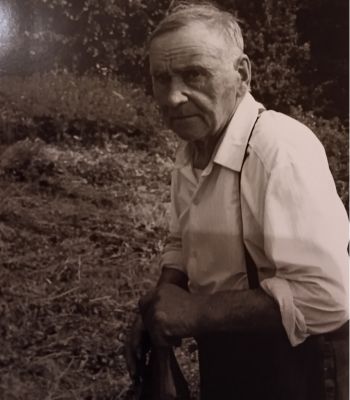Welsh herd retains same bloodline for 85 years
17th February 2025
The Williams family have been farming in South Wales since 1940, and credit keeping a closed herd with managing to keep the bloodline going without breaks.

The family have a mixed herd totalling 85 beef single sucklers (40 breeding cows, breeding bull, followers and youngstock) – all produced for beef and sold at the local livestock market.
They farm 100 acres separated into two parcels near Croespenmaen and Abergavenny, South Wales.
The herd consists mainly of Herefords, crossed with Angus and British Blues. Apart from the pedigree Hereford breeding bull bought from another closed herd in 2020, all can be traced back to the original dairy herd set up by Irving Williams in 1940.
Genetics come into their own
The farm is now run by Julie, Heather and Ffion Robertson (Irving’s granddaughter and great granddaughters) and Stuart Robertson.
They keep their homebred cattle in a roundhouse during the winter, where the cattle are fed ad lib silage.
“During the nicer months (when we get them) cows are out in the field eating as much grass as they can with their calves beside them, which is where the genetics from the Herefords and the Angus come into their own,” Heather explained. “Producing weighty calves fed on grass-based system.”

Return to farming
Julie has always stayed on the farm, except for a period travelling with Stuart when he served as a royal engineer in the army. As a result the children had a slightly different upbringing to other farming families, Heather says.
Stuart’s grandfather had previously farmed land in Perthshire, but army life pulled them both away from farming life.
However, when Stuart retired from the army after 24 years of service, Julie insisted they returned to her beloved family home, and in 2008 they were back to farming.

Avoiding buying in problems
Irving bought his foundation herd of Ayrshires from Ayrshire in 1940 before transitioning them over to the British Friesians.
“Irving always believed in breeding his own animals as he felt that buying in risked ‘buying in somebody else’s problem’,” Heather says.
“Irving liked to know how an animal was raised and handled and felt more confident knowing how he raised them and handled from a young age rather than someone’s older animal.”
This is a tradition the family still keeps today.
When looking for replacement breeding bulls he would always turn to a much missed and well-respected dealer, Dick Williams, who would never fail in finding a decent Friesian bull calf for Irving to bring on alongside two other AI home bred calves for comparison.
“This resulted in Irving being a much-respected character in the local area and on a number of occasions members of the herd would take first place at many a local show,” she added.
READ MORE: Lower supply and rising demand predicted for British beef in 2025
READ MORE: Maximising calf health this spring
READ MORE: First case of bluetongue serotype 12 confirmed in England
A combination of the decline of milk prices, the council’s failure to maintain local road structures and the passing of Julie’s father from cancer in 2000, prompted the family to stop milking.
Some of the cows were sold on while others were kept and AI’d to Herefords, helping to set up the current herd.

Strict biosecurity
The farm has seen much change over the past 85 years and has been very lucky to have been unaffected by disease outbreaks, such as BSE in the 90s and foot-and-mouth in 2001.
Keeping the herd closed and putting strict biosecurity and vaccination programs in place, has been the key to the family’s success in preserving their bloodline, alongside having helpful neighbours who have helped the family out over the years and most importantly having two daughters taking an interest.
However, they are very concerned about TB, having had two members of the herd to go inconclusive for the disease.
Despite this they hope that the herd’s unique traceable bloodline will continue well into the future.


Read more livestock news.


